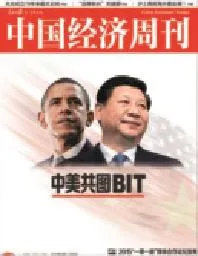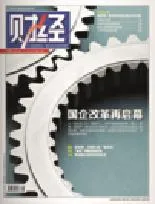On Chinese Media
On Chinese Media

China Economic Weekly
Issue No. 38, 2015
Sino-U.S. Joint Efforts on BIT
Chinese President Xi Jinping and his wife Peng Liyuan's arrival on September 22 in Seattle marked the start of their fourday state visit to the U.S. In his speech at the welcoming banquet,Xi stressed that the two countries should reach consensus on the Bilateral Investment Treaty (BIT) as soon as possible. He spoke of the BIT again the following day in a speech to Chinese and American entrepreneurs.
Global economic integration is currently undergoing impressive reform. The Doha Round of talks having stagnated,and as global multilateral trade and investment agreement negotiations gradually lose their momentum,regional cooperation and such agreements as Free Trade Agreements (FTA) and BITs are the new tendency. Statistics show that by February 2015,3,268 BITs had been sealed globally. None,however,was between the world's two largest economies - China and the U.S.
On September 16,94 American CEOs,including Tim Cook,Warren Buffet,Michael Bloomberg and Mark Zuckerberg,jointly appealed to the heads of the two states to conclude a high-standard BIT. They said in their letter that this proactive and stable Sino-U.S. economic and financial tie would not only bolster global economic growth but also establish a solid foundation for bilateral relations. It is thus in the interests of the world as a whole to take action on strengthening economic ties between China and the U.S.
A high-standard BIT will accelerate the shift towards a transparent investment system,boost cross-boundary investment flows,and create more job opportunities amid sustainable economic growth.
Henry Paulson,president of the Paulson Institute of Chicago University and former treasury secretary of the Bush administration,said in his letter that the BIT would make the Chinese market more accessible to American enterprises and create more job opportunities.
The final agreement on the Sino-U.S. BIT is sure to benefit the industries and peoples of the two countries,providing a better option for global investment rules.

Xinmin Weekly
Issue No. 36, 2015
Vigor of Fluctuating RMB Exchange Rate
Following the announcement on August 11 of an exchange rate reform,the global market sustained a huge blow from the devaluation of the RMB. The country's central bank,People's Bank of China,immediately raised the central parity of the RMB and manipulated the spot exchange and swap transactions to boost the currency's exchange rate. As the domestic capital account has never been totally open,the market exchange rate risk is always under control.
The fundamentals of the Chinese economy are stable,so leaving no room for sharp RMB depreciation. Negative factors,such as rising labor costs and the shrinking percentage of the working population,undoubtedly exist. However,an excessively negative attitude as regards devaluation of the RMB is unfounded,for two main reasons. First,the current population structure is challenged by a decreasing labor force; second,the industry structure is transforming,characterized by an ascending service industry share and a declining share of labor intensive manufacturing. Despite the dwindling GDP growth rate of between seven to eight percent,there are still bright spots in the country's economic development. For instance,the service industry contribution to GDP has exceeded that of the manufacturing and Internet industries.
As every small change in China has impact on the world economy,people immediately cast their eyes on the RMB. As the RMB approaches center stage,the Chinese economy gains increasing favor. Economic multi-polarization also calls for multipolarization of currency.

Oriental Outlook
Issue No. 37, 2015
Tibetan Classes
Nowadays,a new group of Tibetans,inland Tibetan graduates,who represent almost one percent of the total regional population,are growing up and playing a pivotal role in the construction of Tibet.
Using inland resources to cultivate Tibetan talents is a wise option. This mode can be traced back to the Qing Dynasty during the reign of Emperor Guangxu (1875-1908),when the Manchu and Mongolian High School was firstly established. Since 1984,it has become a longterm and stable mode of talent cultivation. In 1985,junior middle schools in 16 provinces and cities nationwide started Tibetan classes,selecting 1,300 students from the autonomous region to study in inland provinces.
The number of Tibetan students at junior middle schools has grown to 1,620,and to 3,000 in senior high schools. A further 3,000 have enrolled at secondary vocational schools since 2010. The 16 provinces and cities that initially took part in the program have now expanded to 21.

Caijing Magazine
Issue No. 25, 2015
Set Sail for SOE Reform
The top-level design for state-owned enterprises has finally taken shape and is soon to be formally announced to the public. A new program -an in-depth reform involving more than 150,000 central and local state-owned enterprises,RMB 100 trillion in assets,and 30 million plus workers - is about to set sail on uncharted waters.
The general plan has been approved by the CPC Central Committee and will soon be promulgated. The as yet unveiled main content among SOE leadership members has polarized world attention.
In November 2013,the new “actively develop a diversified ownership economy”concept was approved at the Third Plenary Session of the 18th CPC Central Committee. It initiatively demanded to,“improve the state-owned assets management system and strengthen state-asset supervision by focusing on capital management. Establish a number of state-owned capital operating companies and back the transformation of qualified state-owned enterprises into state-owned investment companies.”
It is the new task of the State-owned Assets Supervision and Administration Commission of the State Council to manage state-owned capital within the framework of the new reform plan.

Life Weekly
Issue No. 39, 2015
Intermingled Eastern & Western Cultures
In Chinese,the individual characters for “east” and “west”signify the two compass points,but when put together,they form the word for “things.” In this respect,the two Chinese characters perfectly encompass the east-west running Silk Road and the “things” that traveled along it.
Silk was not the earliest commodity transported on the Silk Road. The “leather and wool road” would be a more apt definition of the land trade zone,while the Maritime Silk Road is actually a “pepper road.” Discovering how silk became the main trading good requires measuring the geographical distance between two continents,as well as the distance between Eastern and Western cultures. It was no accident that caravans followed for a thousand years a route identical to that described in The Geographical Pivot of History by British geographer H. J. Mackinder in the early 20th century. It was the goods and materials on the move that drove the formation of the socalled pivot region.

